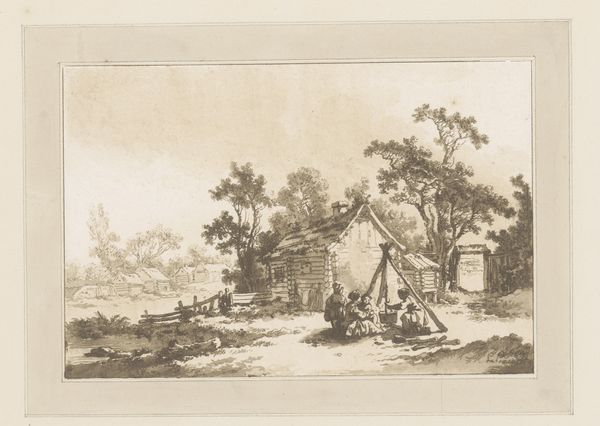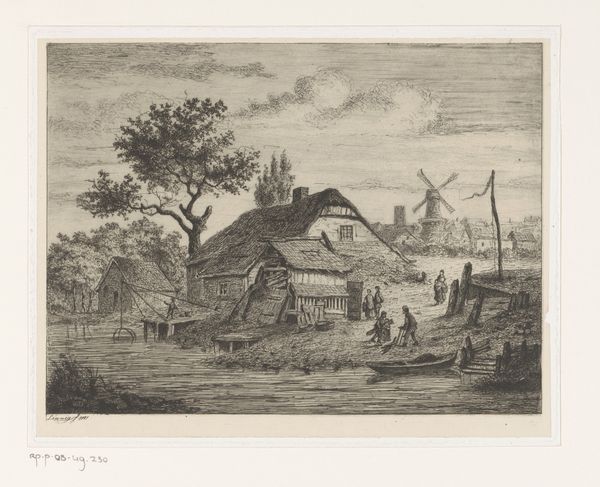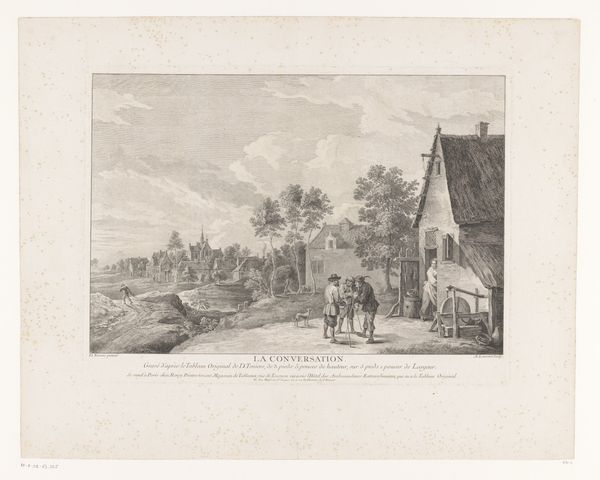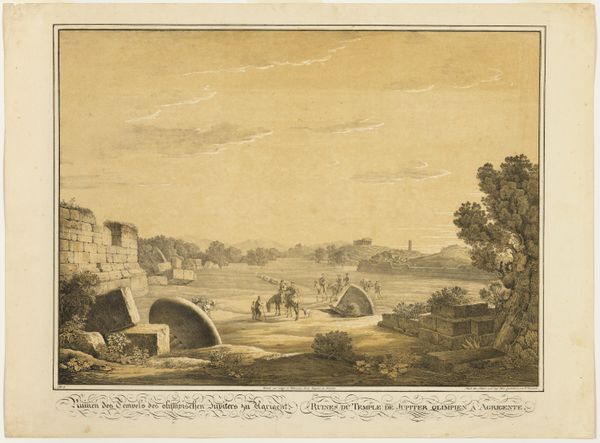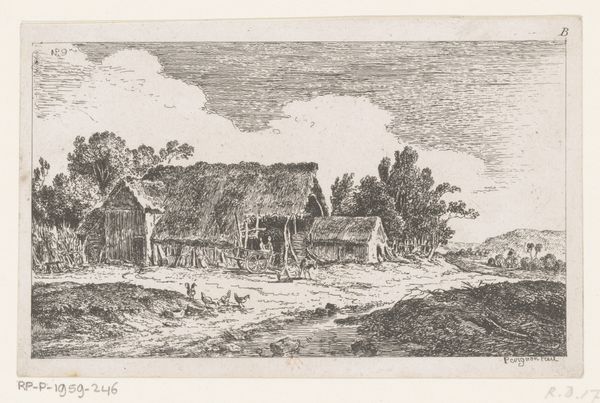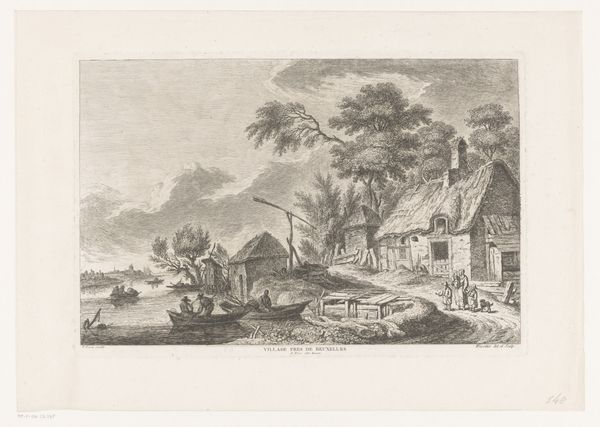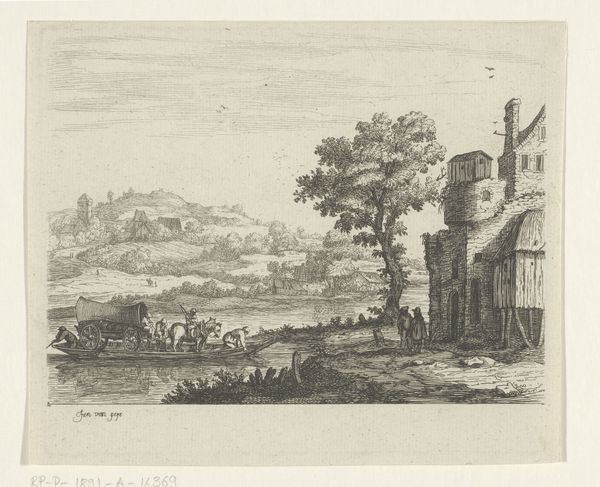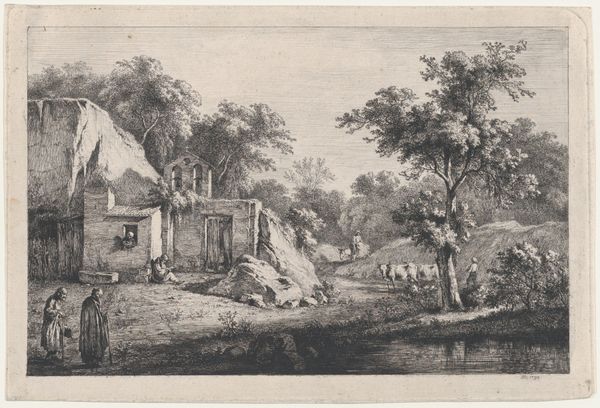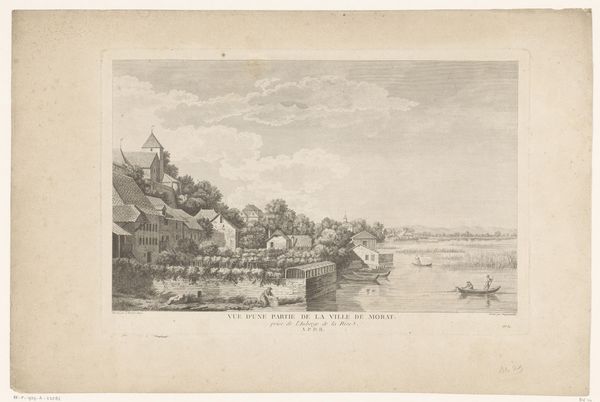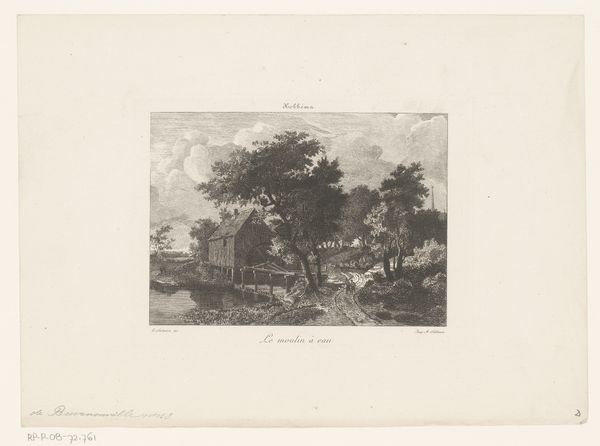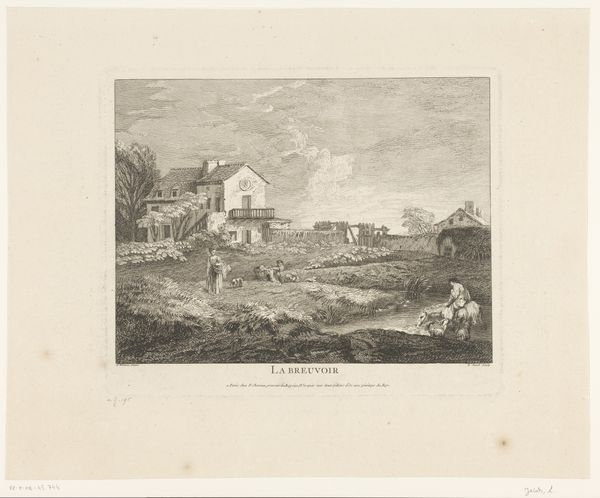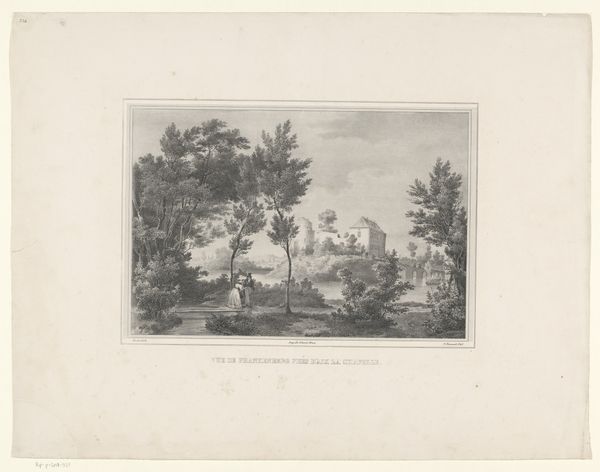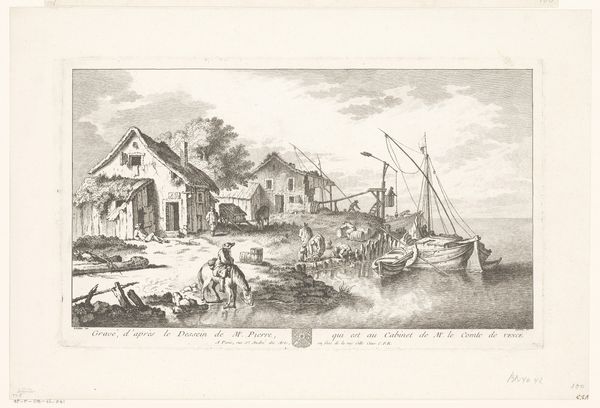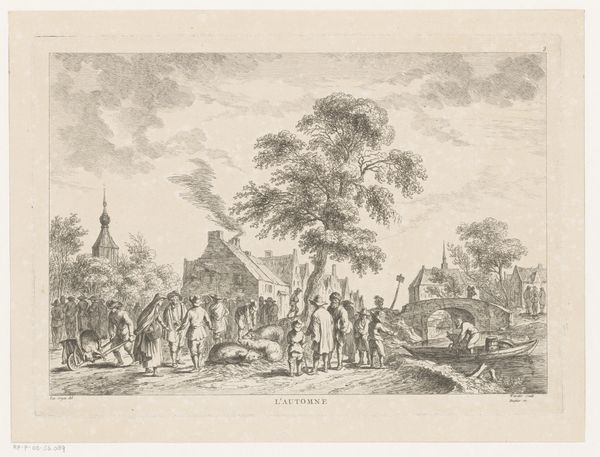
print, etching
#
baroque
# print
#
etching
#
landscape
#
etching
#
genre-painting
Dimensions: height 225 mm, width 314 mm
Copyright: Rijks Museum: Open Domain
Franz Edmund Weirotter created this etching, "Figures by a Well on a River," in the mid-18th century. The scene depicts daily life, likely in the Austrian or German countryside. Weirotter's work provides a glimpse into the social and economic structures of his time, offering a view of the labor and transport of ordinary people. The print, titled "Le Printemps," or "Spring," is filled with visual codes; for example, the windmill in the background symbolizes industry, while the figures drawing water at the well represent rural life. The presence of boats suggests trade and transportation networks that were essential to the economic health of the region. Weirotter's position as court painter in Vienna also speaks to the institutional factors that shaped artistic production in the 18th century. The study of Weirotter’s engravings can be enhanced by looking at period documents, such as trade records, local histories, and estate inventories, to deepen our understanding of the social context. Art history is often about piecing together the conditions of existence.
Comments
No comments
Be the first to comment and join the conversation on the ultimate creative platform.
